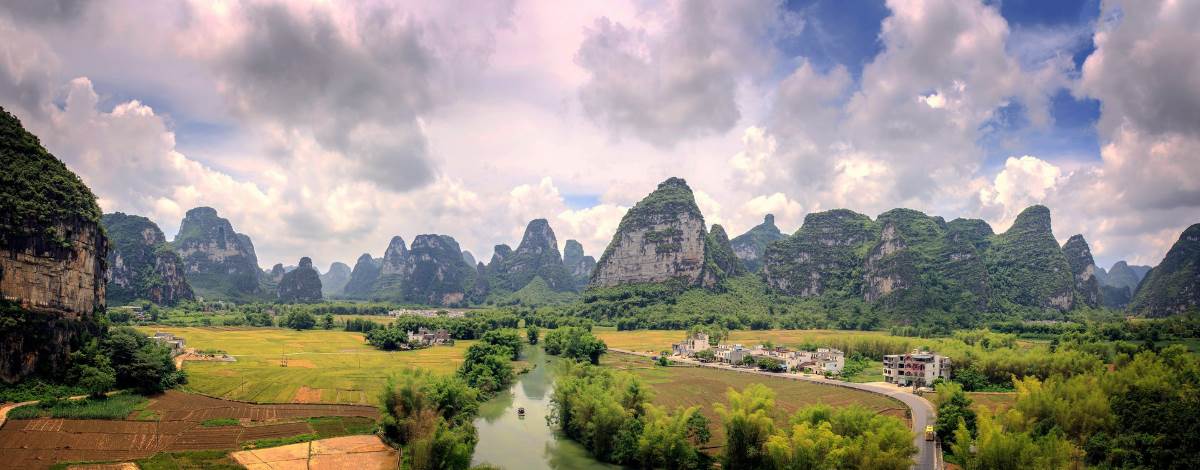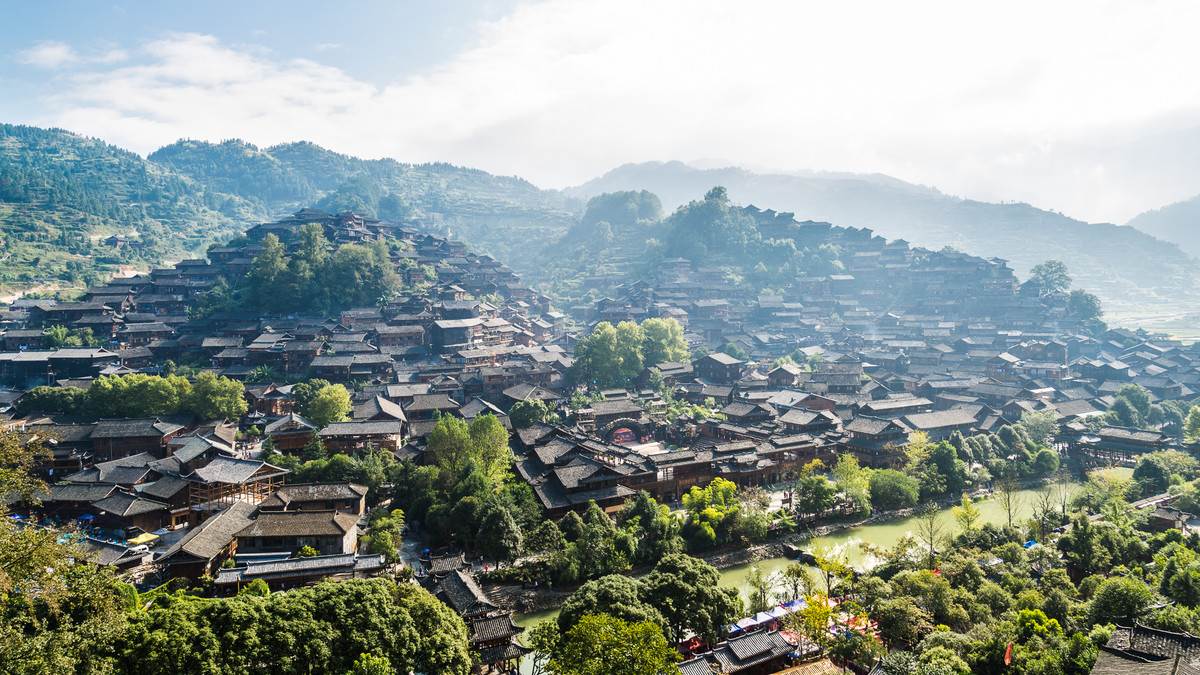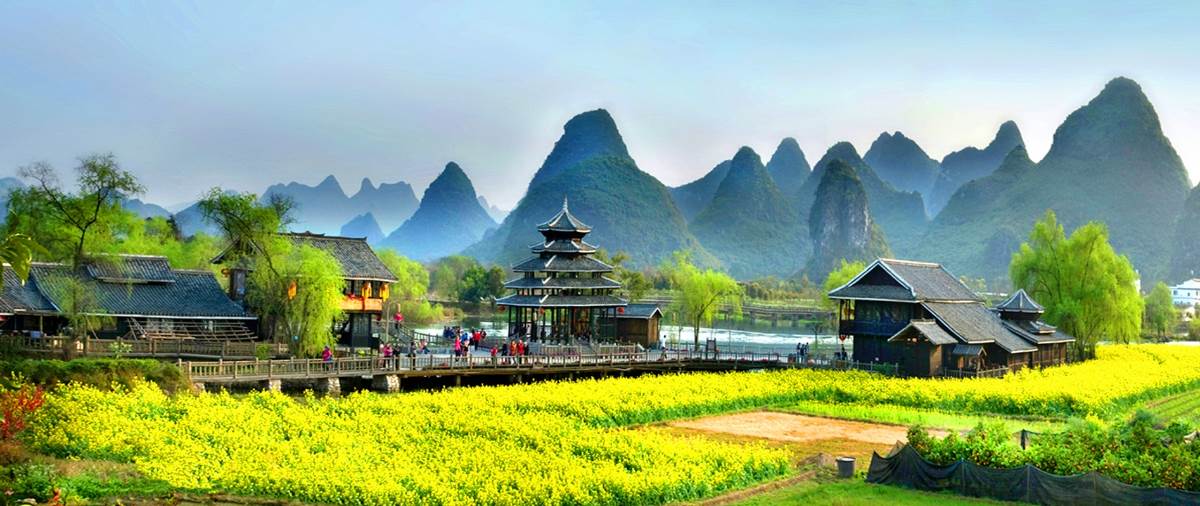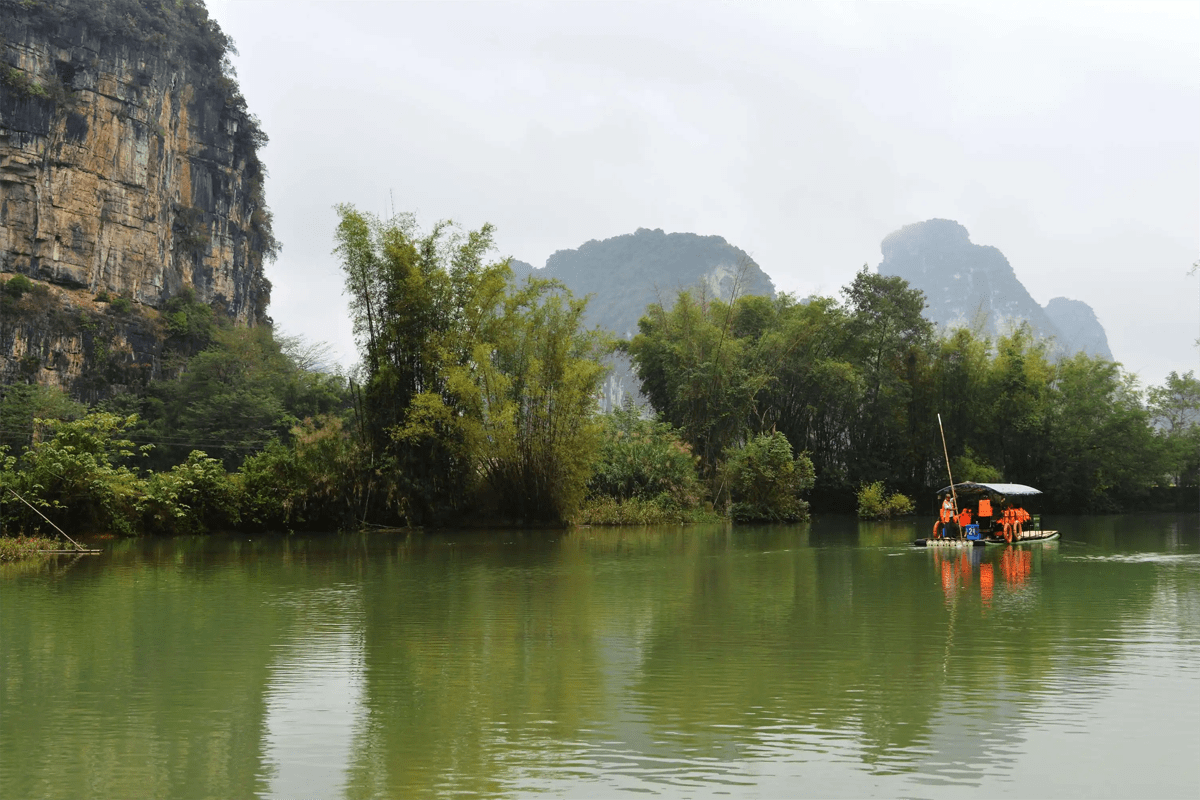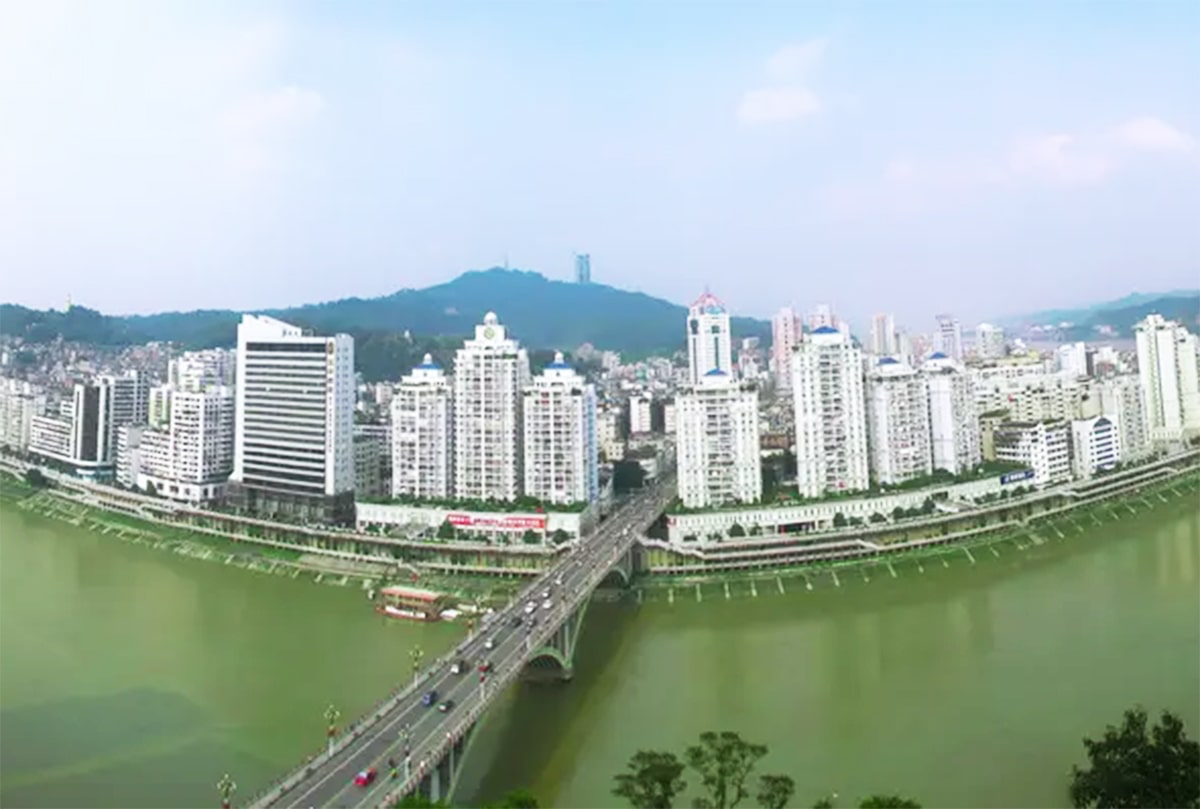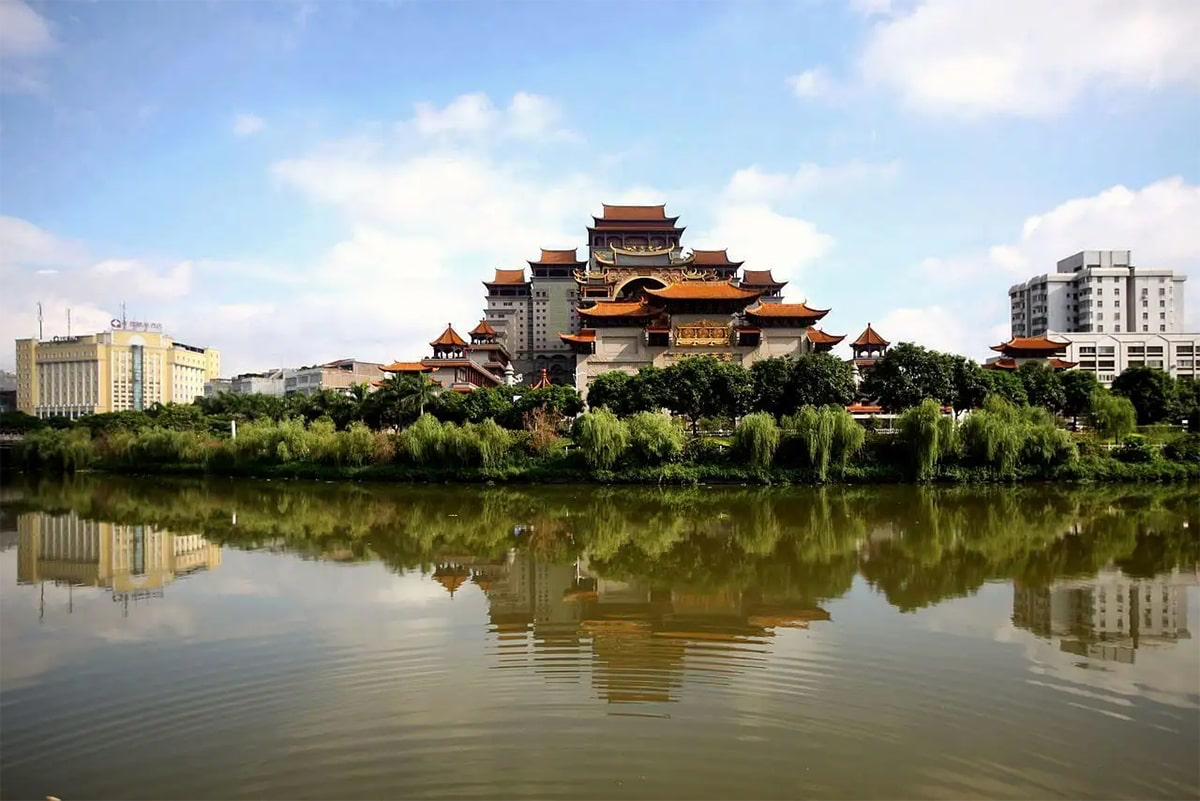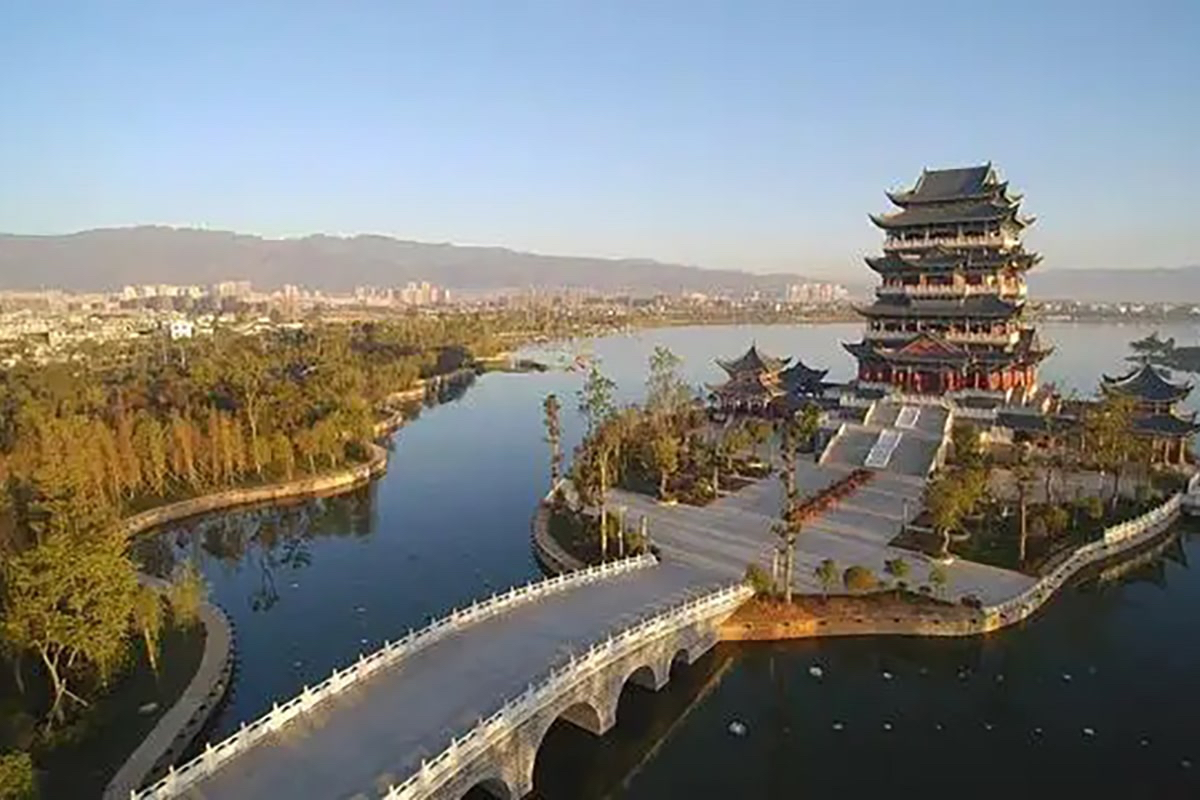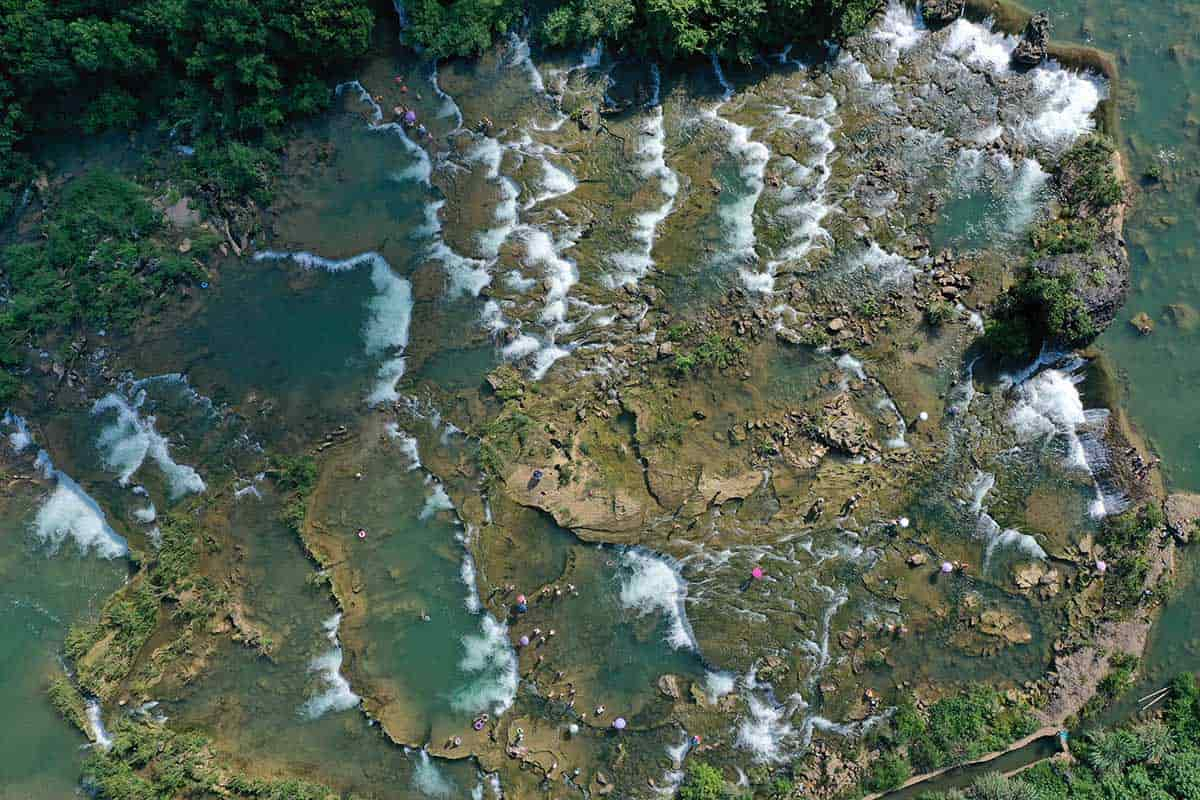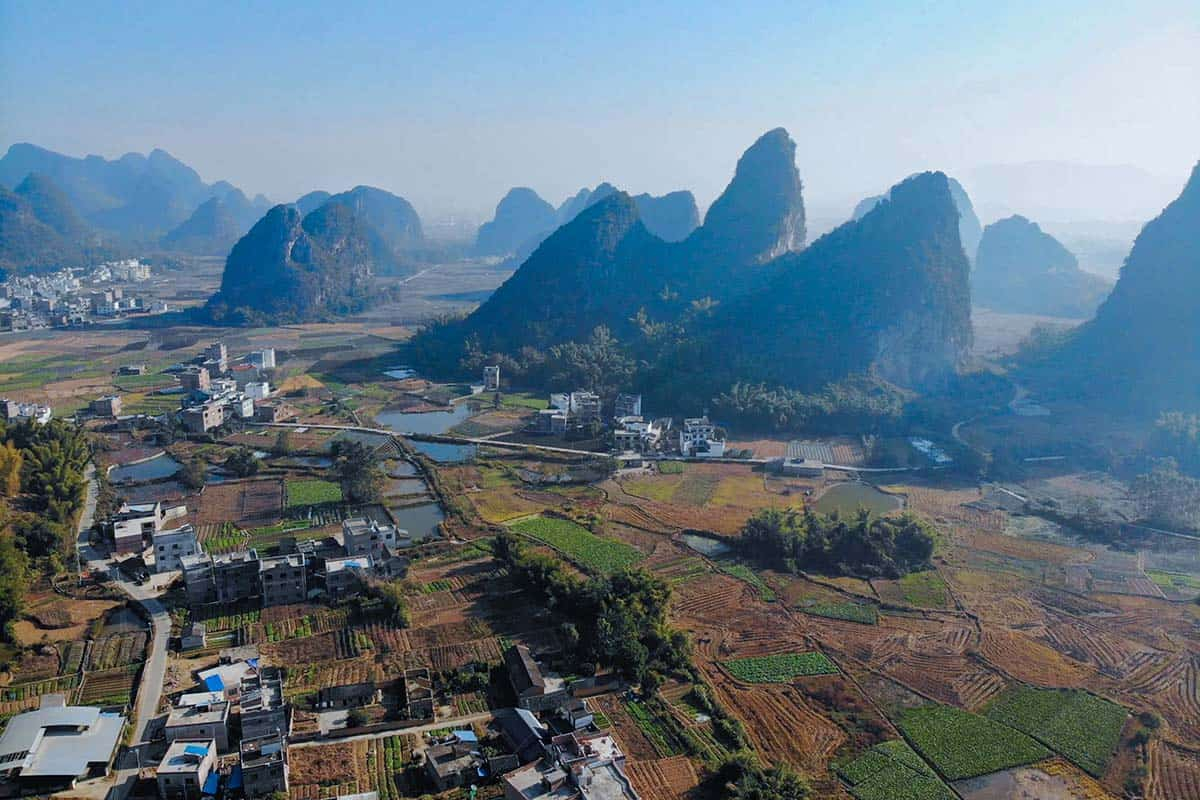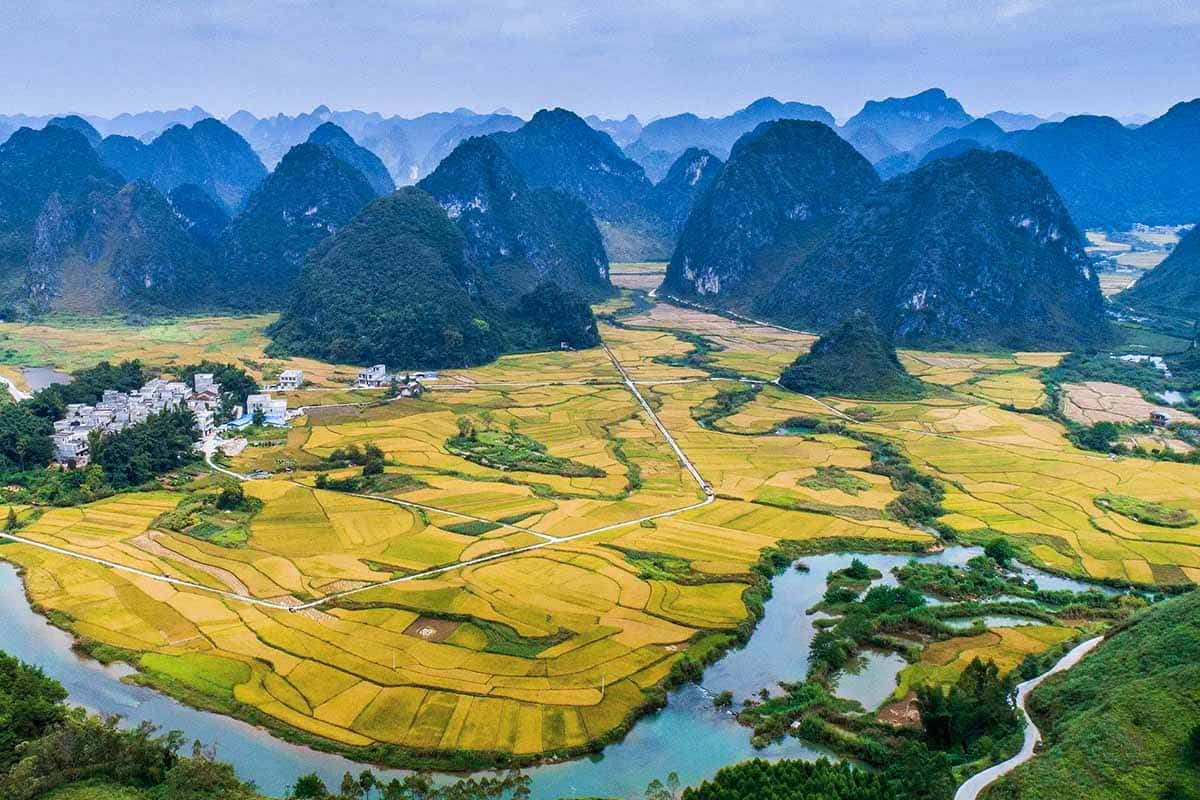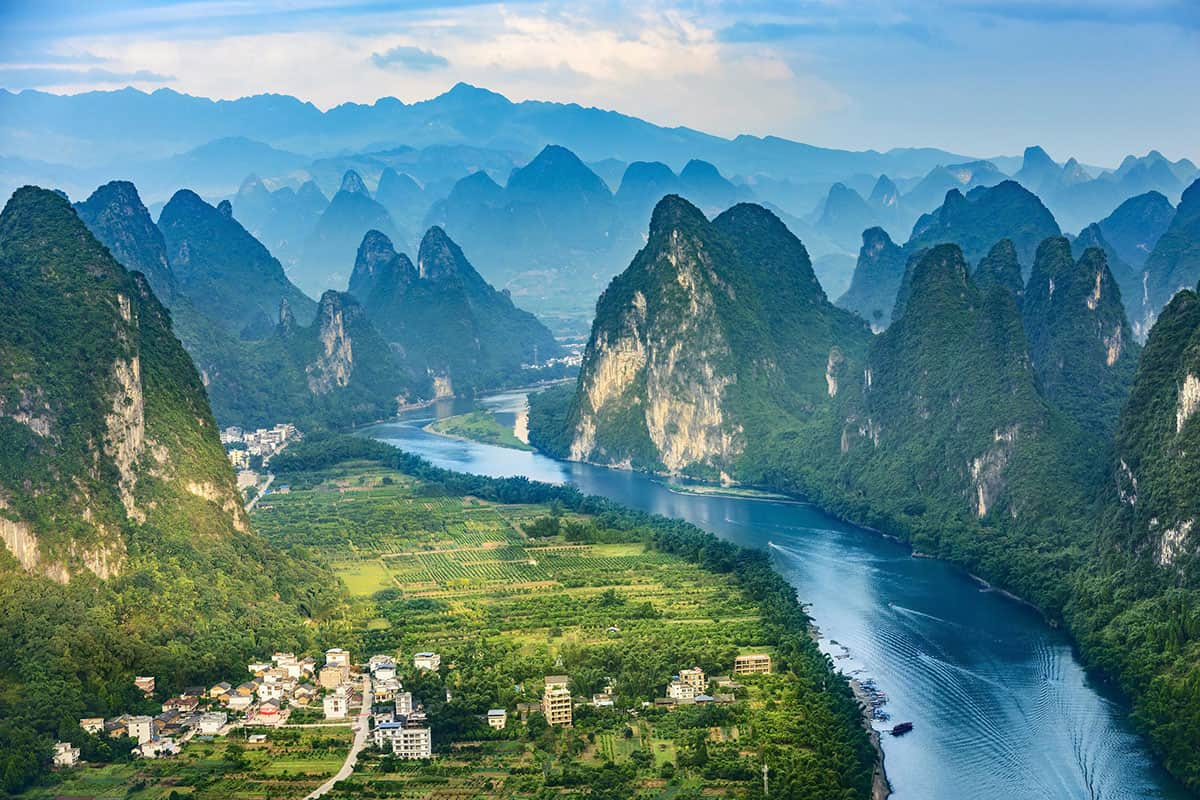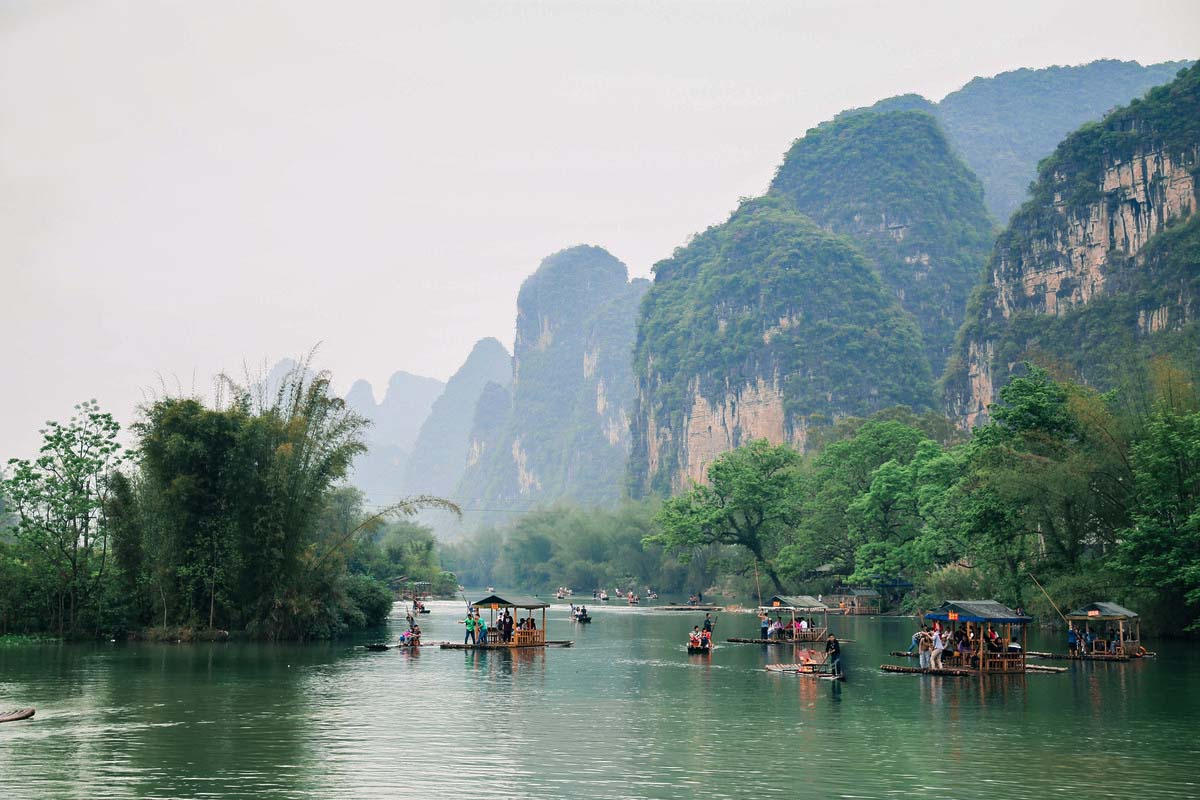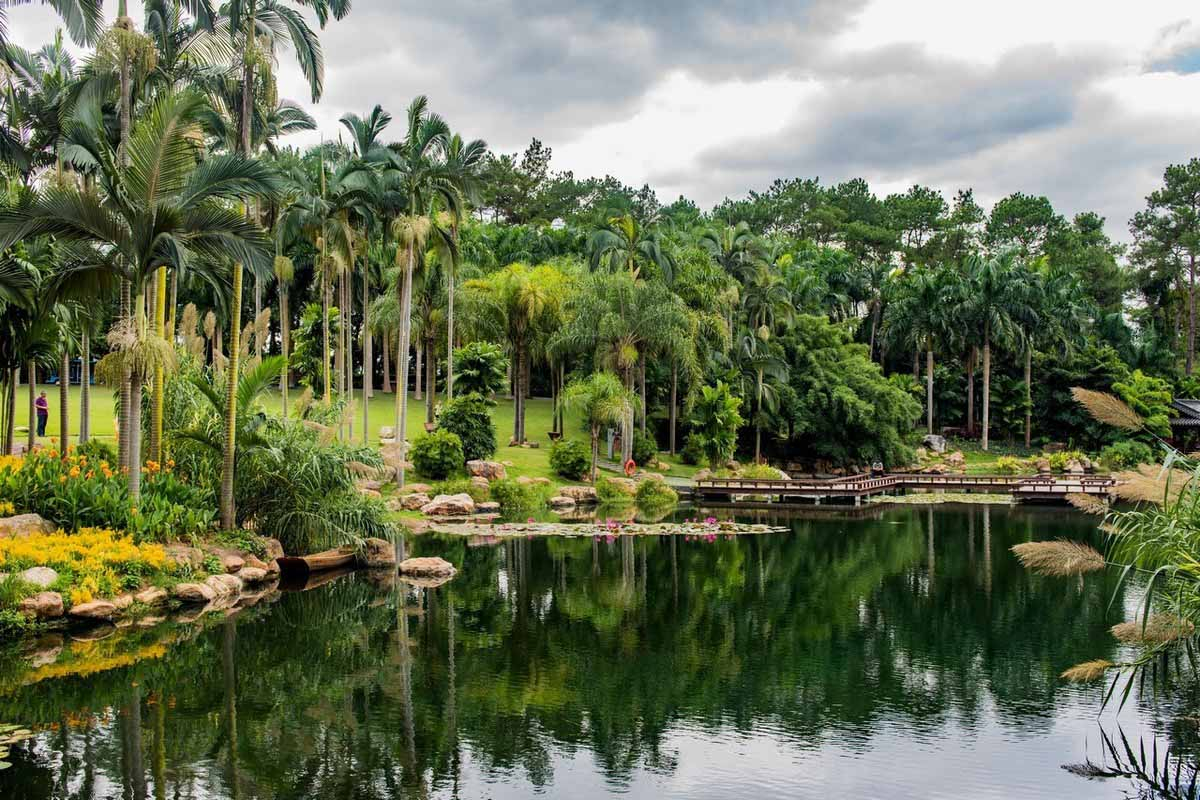Guangxi Longji Rice Terrace
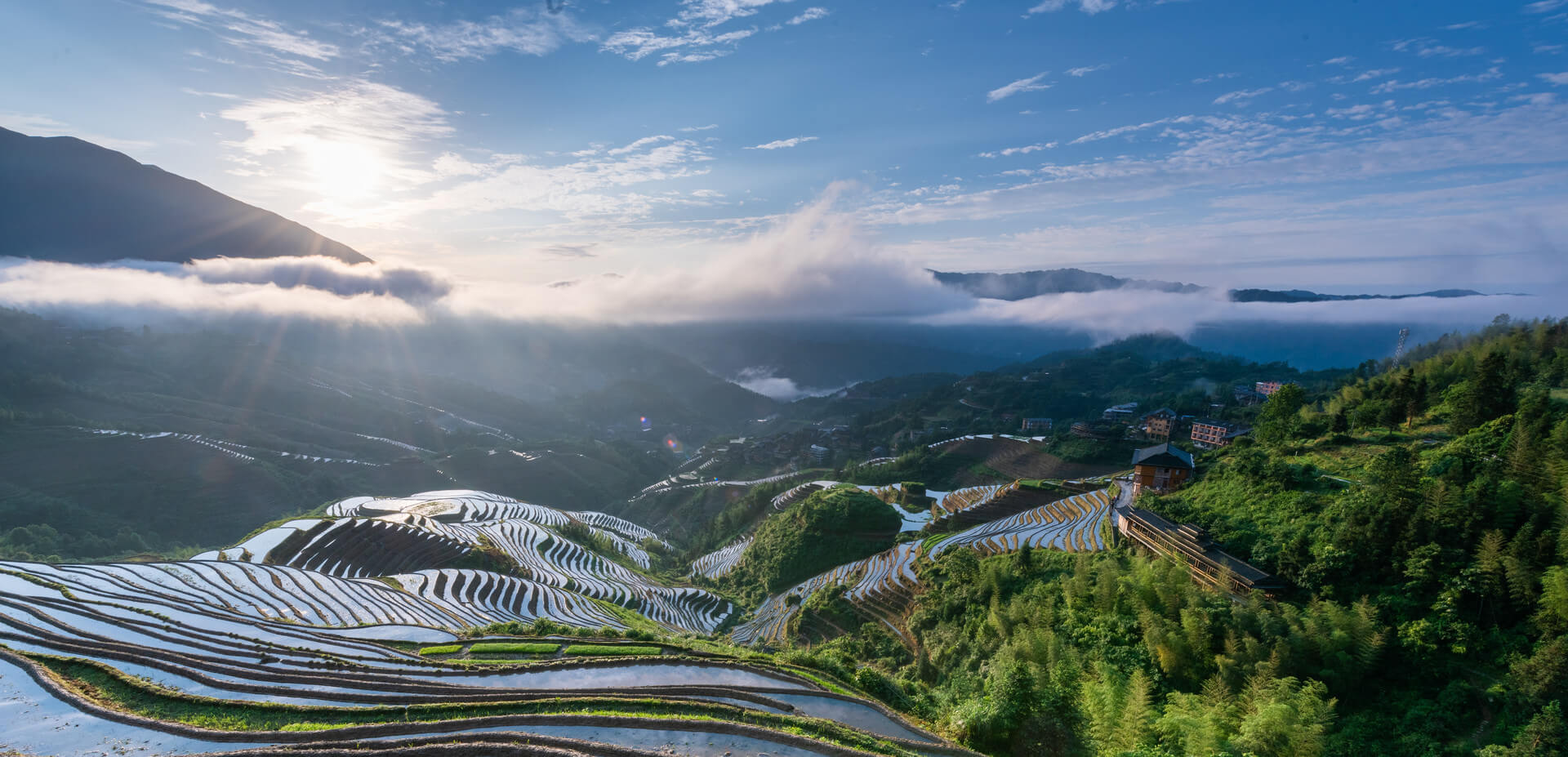
Although rice terraces wind their way around mountains throughout China, the Longji Rice Terraces are considered to be the most magnificent of them all. They are located in Longsheng County, about 100 kilometres outside of Guilin, and are sometimes referred to as the Longsheng Rice Terraces.
The word “longji” means “dragon’s backbone” and these rice terraces earned their unusual name because the terraced fields climbing up the mountain look like dragons’ scales whilst the summit of the mountain range resembles a dragon’s backbone.
Construction of the terraces began in the Yuan Dynasty (1271-1368), and continued until the early Qing Dynasty (1644-1911) when construction was completed. The Dragon's Backbone Rice Terraces are the culmination of both the profound wisdom and strenuous labor of the Zhuang people.
The Longji Rice Terraces is a beautiful natural picture. The linked together rice terraces vary from season to season. In spring, the water is irrigated into the fields and the terraces look like great chains or ribbons hung on the hillsides. When the onset of summer, green waves rush continuously down the mountainside from the heaven. The theme of autumn is the harvest, with the mountainside decorated with the gold of ripened millet. Coming into winter, the whole mountain will be covered with white snow, just like dragons playing with water.
As well as its amazing scenery, Longji is also the area to visit to experience China’s ethnic minorities' culture. The Zhuang and the Yao nationalities live here, though mainly it is the Zhuang people. The women dress in unique and colorful costumes, singing and dancing. Guests also can join in with them to enjoy the original Zhuang life and culture, and even stay with local families enjoying both the Longji tea and the Longji wine.
● Pingan Zhuang Village
Panorama of the Ping An terraced fields are built along the slope winding from the riverside up to the mountain top, the highest part being 880m in elevation while the lowest part is 380m. The coiling line that starts from the mountain foot up to the mountain top divides the mountain into layers of water glittering in the sun in spring, layers of green rice shoots in summer, layers of golden rice in fall, and layers of silvery frost in winter.
Once inside Ping An (a Zhuang Village), go up to find a relatively flat rock path. Follow it to the east up to a lake (at least 30mn walk with panoramic view of the village). Further on from the lake it is a bit more than an hour's walk to the Yao village of Zhonglu, and an additional hour's walk will bring you to another Yao village Dazhai, which can serve as an alternative base for your exploration. The best time for a good photo is in early June, when the paddies are pumping with water, the villages are transferring young rice plants from the seed bed to large areas of rice terrace.
● Jinkeng Dazhai
Above the Ping´an Village lies the Jinkeng Minority Village. The whole scenic area covers over 10 square km. The terraces were cultivated since Yuan Dynasty with a history of hundreds of years.The rice terraces here are so grand with cloud and mist surrounding the summit of the hills. Here is not just the heaven for photographers from domestic and overseas, but also a wonder place for leisure sightseeing of tourists all over the world.
Jinkeng is a collection of five villages of the Yao minority. All have kept their traditions and are therefore interesting to see. The largest of them, Dazhai is nestled at the foot of a hill terrace. This minority has built houses which follow the shape of the hill and therefore rice terraces. This makes it even more difficult to differentiate cultures. In the villages of Dazhai Yao Minority are nicknamed the Red minority because women who wear black skirts with a red top. This very welcoming minority is supposed not to have been too affected by tourism, unlike the Yao village of Huangluo. It is easier to get in touch with them in a more natural way.
● Hiking in terrace
There are some fabulous hiking to be done around the rice terraces, though finding your way when outside the signposted areas can be tricky at times.
Around Ping'An. There is a well sign-posted walk around Ping'An that takes you through Ping'An town itself, and up to both viewpoints - Viewpoint 1 (called Nine Dragons and Five Tigers) and Viewpoint 2 (Seven Stars with Moon), both of which have spectacular views of the town and surrounding terraces. The route is well sign-posted (look for the stone-engraved maps about the place) with good paths; completing the full circuit takes about 1 - 1.5 hrs.
Ping'An to Zhongliu and Dazhai. The walk from Ping'An to Zhongliu takes approx 2 hours, from where it is another 2 hours to Dazhai. To Zhongliu Start by heading out from Ping'An up the hill to Viewpoint 1, then continue over the back and along a dirt road. This will take you past a lake and through a lovely valley.
● Best spots for shooting in Longji Rice Terraces
1. The "Seven Stars Accompany the Moon" at Ping'an Village: a popular shooting site for shutterbugs.
2. The "Nine Dragons and Five Tigers" at Ping'an Village: smaller than the terraces of Dazhai Village with its own features.
3. The No.1 Viewing Spot of Dazhai Village: comparatively higher than others, best for watching sunrise and sunset.
4. The No.2 Viewing Spot of Dazhai Village: comparatively closer to the village, best for watching sunrise.
5. The No.3 Viewing Spot of Dazhai Village: the farthest, highest and grandest spot where many beautiful pictures of Dragon's Backbone Rice Terraces were shot.
● Best time to visit
The best time to visit the Longji Rice Terraces is during the months of May-June and Sep-Oct.
When in May and Jun this is the time just after the farmers have planted their new crops of rice and the fields are full of water making for beautiful reflections, especially at sunrise and sunset.
The weather is also nice during this time, with some rain, but no thunderstorms, and pleasant temperatures that are not too hot during the day and not too cold at night. By the end of June, the summer monsoon season kicks in and the weather gets rather dicey, with hot temperatures and lots of thunderstorms.
September through mid-October are also good months to visit, but with drastically different scenery. During the early fall months, the rice is ready for harvest and the grains have all turned a golden yellow. The weather during this time is ideal for traveling as it’s dry and sunny with pleasant temperatures that are not too hot during the day and not too cold at night. Don’t come too late in October though or you’ll miss the rice altogether and will be left with nothing but brown dirt terraces after the harvest.
You Might Like
- HOTEST
- RECOMMEND


